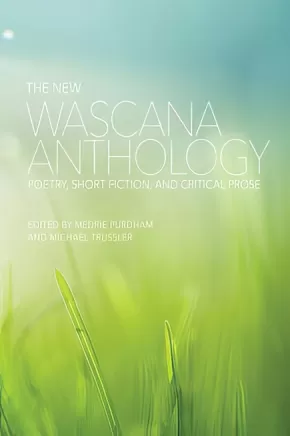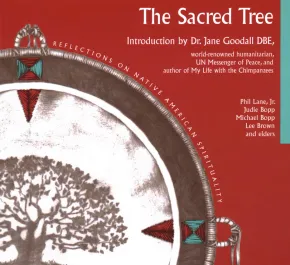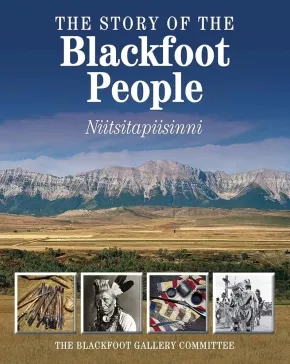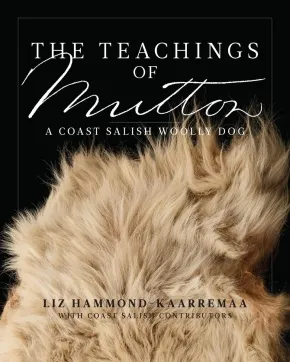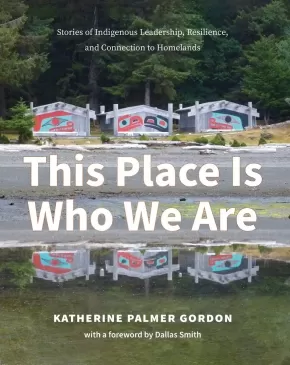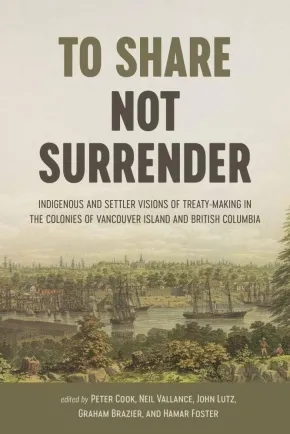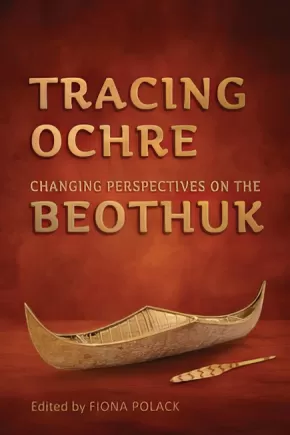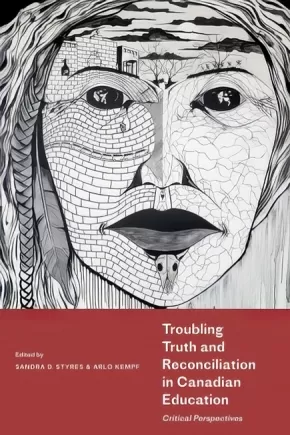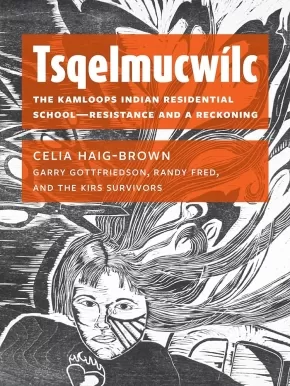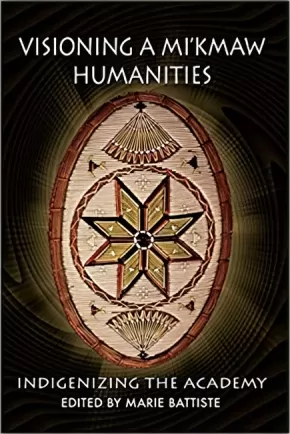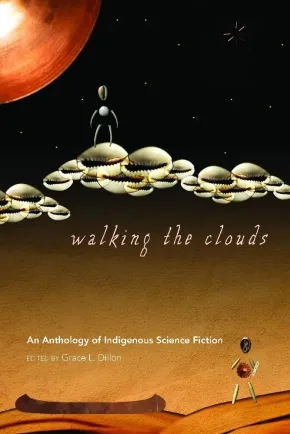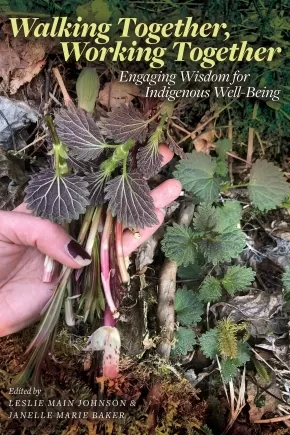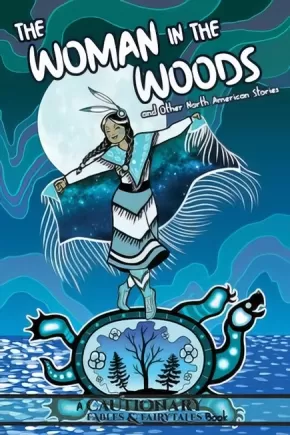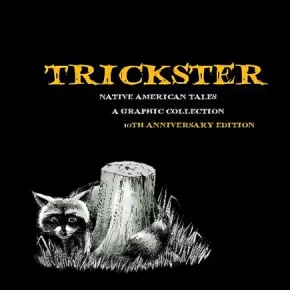
Various Indigenous Contributors
Books (13)
The New Wascana Anthology: Poetry, Short Fiction, and Critical Prose
$49.50
Editors:
Format:
Paperback
Text Content Territories:
Indigenous Canadian;
ISBN / Barcode: 9780889773080
Synopsis:
Synopsis:
The New Wascana Anthology is named for the Cree word "oskana," meaning "bones,"* but this anthology is no literary graveyard. It will introduce you to stories, poems, and essays that can be discussed over drinks, or used to impress friends years after leaving English 100 behind.
Offering a taster's choice of the best Canadian writing, with a special focus on Aboriginal and Prairie writers, this anthology includes pieces selected to introduce you to the English literary canon. Going back hundreds of years, the oldest poems included here have no known author, while the youngest writer is a recent university graduate.
Building on the bones of the canon (including all of Canada's Man Booker Prize-winners and newest Nobel Laureate), The New Wascana Anthology features writers such as Flannery O'Connor, Thomas King, Carmine Starnino, and Ursula K. Le Guin who will challenge your worldview. Most importantly, this anthology is about turning the page, opening your mind, and revelling in the pleasures of reading.
*The bones referred to are the bones of plains bison, a species that once numbered in the tens of millions on the Great Plains.
Educator Information
Contains works from Indigenous and non-Indigenous writers.
Table of Contents
Preface
Poetry
Anonymous
Summer is icumen in
Sir Patrick Spens
Mary Hamilton
Geoffrey Chaucer (ca. 1343–1400)
from The Canterbury Tales
Excerpts from General Prologue
Sir Thomas Wyatt (1503–1542)
The Long Love, That in My Thought Doth Harbour
Sir Walter Ralegh (ca. 1552–1618)
The Nymph’s Reply to the Shepherd
Edmund Spenser (ca. 1552–1599)
from Amoretti
30. My love is like to ice
75. One day I wrote her name
Sir Philip Sidney (1554–1586)
from Astrophel and Stella
59. Dear, why make you more of a dog than me?
Michael Drayton (1563–1631)
from Idea
61. Since there’s no help, come let us kiss and part
Christopher Marlowe (1564–1593)
The Passionate Shepherd to His Love
William Shakespeare (1564–1616)
from Sonnets
18. Shall I compare thee to a summer’s day?
20. A woman’s face, with nature’s own hand painted
116. Let me not to the marriage of true minds
130. My mistress’ eyes are nothing like the sun
from As You Like It
All the world’s a stage
John Donne (1572–1631)
A Valediction: Forbidding Mourning
Death be not proud
The Bait
The Flea
Ben Jonson (1572–1637)
Epigram XXII: On My First Daughter
Epigram XLV: On My First Son
Song: To Celia
George Herbert (1593–1633)
Love (III)
John Milton (1608–1674)
When I Consider How My Light Is Spent
from Paradise Lost, Book 1
The Invocation
Anne Bradstreet (1612–1672)
Before the Birth of One of Her Children
The Author to Her Book
Andrew Marvell (1621–1678)
To His Coy Mistress
Anne Finch, Countess of Winchelsea (1661–1720)
To the Nightingale
A Letter to Daphnis, April 2, 1685
Alexander Pope (1688–1744)
The Rape of the Lock
Lady Mary Wortley Montagu (1689–1762)
Addressed to—
Thomas Gray (1716–1771)
Elegy Written in a Country Churchyard
Christopher Smart (1722–1771)
from Jubilate Agno
My Cat Jeoffry
William Blake (1757–1827)
from Songs of Innocence
The Chimney Sweeper
The Lamb
from Songs of Experience
A Poison Tree
London
The Chimney Sweeper
William Wordsworth (1770–1850)
A slumber did my spirit seal
Composed Upon Westminster Bridge, September 3, 1802
I wandered lonely as a cloud
The world is too much with us
Samuel Taylor Coleridge (1772–1834)
Kubla Khan
George Gordon, Lord Byron (1788–1824)
She Walks in Beauty
The Destruction of Sennacherib
Percy Bysshe Shelley (1792–1822)
Ozymandias
John Keats (1795–1821)
La Belle Dame Sans Merci
When I have fears that I may cease to be
Alfred, Lord Tennyson (1809–1892)
Ulysses
Robert Browning (1812–1889)
Porphyria’s Lover
My Last Duchess
Emily Brontë (1818–1848)
Remembrance
Walt Whitman (1819–1892)
When Lilacs Last in the Dooryard Bloom’d
Matthew Arnold (1822–1888)
Dover Beach
George Meredith (1828–1909)
from Modern Love
17. At dinner, she is hostess, I am host
Emily Dickinson (1830–1866)
F479. Because I could not stop for Death
F591. I heard a Fly buzz—when I died
F620. Much Madness is divinest Sense
F1096. A narrow Fellow in the Grass
F1263. Tell all the Truth but tell it slant
Lewis Carroll (1832–1898)
Jabberwocky
Thomas Hardy (1840–1928)
The Ruined Maid
The Convergence of the Twain
The Workbox
Gerard Manley Hopkins (1844–1889)
God’s Grandeur
Pied Beauty
The Windhover
A. E. Housman (1859–1936)
from A Shropshire Lad
XIX. To An Athlete Dying Young
Sir Charles G. D. Roberts (1860–1943)
Tantramar Revisited
Archibald Lampman (1861–1899)
Heat
William Butler Yeats (1865–1939)
The Second Coming
Leda and the Swan
Crazy Jane Talks with the Bishop
Edwin Arlington Robinson (1869–1935)
Miniver Cheevy
Robert Frost (1874–1963)
After Apple-Picking
Mending Wall
Nothing Gold Can Stay
The Silken Tent
William Carlos Williams (1883–1963)
The Red Wheelbarrow
This is Just to Say
Pictures from Brueghel
D. H. Lawrence (1885–1930)
Piano
Snake
Ezra Pound (1885–1972)
In a Station of the Metro
The River Merchant’s Wife: A Letter
Isaac Rosenberg (1890–1918)
Break of Day in the Trenches
Edna St. Vincent Millay (1892–1950)
Elegy before Death
What lips my lips have kissed
Wilfred Owen (1893–1918)
Dulce et Decorum Est
e.e. cummings (1894–1963)
“next to of course god america i
anyone lived in a pretty how town
F. R. Scott (1899–1985)
Lakeshore
Langston Hughes (1902–1967)
The Negro Speaks of Rivers
Harlem
A. J. M. Smith (1902–1980)
The Lonely Land
Far West
Stevie Smith (1902–1971)
Not Waving but Drowning
Earle Birney (1904–1995)
Anglo-Saxon Street
W. H. Auden (1907–1973)
Musée des Beaux-Arts
Theodore Roethke (1908–1963)
My Papa’s Waltz
A. M. Klein (1909–1972)
Heirloom
The Rocking Chair
Dorothy Livesay (1909–1996)
Green Rain
Elizabeth Bishop (1911–1979)
In the Waiting Room
Irving Layton (1912–2006)
The Birth of Tragedy
Dylan Thomas (1914–1953)
Fern Hill
Do Not Go Gentle into That Good Night
P. K. Page (1916–2010)
After Rain
Planet Earth
Robert Lowell (1917–1977)
For the Union Dead
Miriam Waddington (1917–2004)
Advice to the Young
Raymond Souster (1921–2012)
The Lilac Poem
Elizabeth Brewster (1922–2012)
The Night Grandma Died
Eli Mandel (1922–1992)
Houdini
Anne Szumigalski (1926–1999)
It Wasn’t a Major Operation
Don Coles (b. 1927)
Collecting Pictures
Robert Kroetsch (1927–2011)
Meditation on Tom Thomson
Rita Joe (1932–2007)
Axe Handles for Sale
I Lost My Talk
Sylvia Plath (1932–1963)
Daddy
Alden Nowlan (1933–1983)
The Bull Moose
Leonard Cohen (b. 1934)
A Kite Is a Victim
Suzanne
Robert Currie (b. 1937)
Young Boy, Fleeing
Glen Sorestad (b. 1937)
Ten Years
Now That I’m Up
John Newlove (1938–2003)
The Double-Headed Snake
Margaret Atwood (b. 1939)
Backdrop Addresses Cowboy
The Nature of Gothic
This Is a Photograph of Me
Seamus Heaney (1939–2013)
Bog Queen
Digging
The Names of the Hare
Patrick Lane (b. 1939)
Mountain Oysters
Gary Hyland (1940–2011)
from Arguments in the Garden of Prayer
1. So many frogs
14. The first sounds
Beth Brant (b. 1941)
for all my Grandmothers
Robert Hass (b. 1941)
Consciousness
Gwendolyn MacEwen (1941–1987)
Manzini: Escape Artist
Marie Annharte Baker (b. 1942)
Pretty Tough Skin Woman
Louise Glück (b. 1943)
Illuminations
Michael Ondaatje (b. 1943)
The Cinnamon Peeler
White Dwarfs
Dennis Cooley (b. 1944)
how there in the plaid light she played with his affections plied them spikes from his heart she stood by pliers in hand he has his pride
Craig Raine (b. 1944)
A Martian Sends a Postcard Home
Tom Wayman (b. 1945)
Did I Miss Anything?
Linda Hogan (b. 1947)
Cities Behind Glass
Lorna Crozier (b. 1948)
The Dirty Thirties
Poem about Nothing
from The Sex Lives of Vegetables
Radishes
Lettuce
Cauliflower
Beth Cuthand (b. 1949)
Four Songs for the Fifth Generation
Kathleen Wall (b. 1950)
Morning Nocturne
Joy Harjo (b. 1951)
She Had Some Horses
Gerald Hill (b. 1951)
Becoming and Going: An Oldsmobile Story
Di Brandt (b. 1952)
completely seduced
Louise Halfe (b. 1953)
She Told Me
Louise Erdrich (b. 1954)
Dear John Wayne
Indian Boarding School: The Runaways
Jacklight
Jeanette Lynes (b. 1956)
The Last Interview with Bettie Page
Anne Simpson (b. 1956)
Grammar Exercise
George Elliott Clarke (b. 1960)
Blank Sonnet
Michael Crummey (b. 1965)
Her Mark
Gregory Scofield (b. 1966)
His Flute, My Ears
Karen Solie (b. 1966)
Parasitology
Randy Lundy (b. 1967)
Bear
Ghost Dance
Stephanie Bolster (b. 1969)
To Dolly
Carmine Starnino (b. 1970)
Pepino’s Poem, “Growing Up in Naples”
Rope Husbandry
Daniel Scott Tysdal (b. 1978)
Metro
Cassidy McFadzean (b. 1989)
I smile earwide
Short Fiction
Sherman Alexie (b. 1966)
The Approximate Size of My Favourite Tumour
Margaret Atwood (b. 1939)
My Last Duchess
Sandra Birdsell (b. 1942)
Disappearances
Raymond Carver (1938–1988)
Cathedral
William Faulkner (1897–1962)
A Rose for Emily
Richard Ford (b. 1944)
Sweethearts
Charlotte Perkins Gilman (1860–1935)
The Yellow Wall-paper
James Joyce (1882–1941)
Araby
Thomas King (b. 1943)
A Seat in the Garden
Ursula K. Le Guin (b. 1929)
The Ones Who Walk Away from Omelas
Alexander MacLeod (b. 1972)
Miracle Mile
Alistair MacLeod (1936-2014)
The Boat
Katherine Mansfield (1888–1923)
The Garden-Party
Yann Martel (b. 1963)
The Facts Behind the Helsinki Roccamatios
Rohinton Mistry (b. 1952)
Swimming Lessons
Ken Mitchell (b. 1940)
The Great Electrical Revolution
Alice Munro (b. 1931)
The Bear Came over the Mountain
Flannery O’Connor (1925–1964)
A Good Man Is Hard to Find
Edgar Allan Poe (1809–1849)
The Cask of Amontillado
Eden Robinson (b. 1968)
Traplines
Gloria Sawai (1932–2011)
The Day I Sat with Jesus on the Sundeck and a Wind Came Up and Blew My Kimono Open and He Saw My Breasts
Guy Vanderhaeghe (b. 1951)
Dancing Bear
Dianne Warren (b. 1950)
Bone Garden
Critical Prose
Stephen Jay Gould (1941–2002)
Evolution as Fact and Theory
Trevor Herriot (b. 1958)
from Grass, Sky, Song: Promise and Peril in the World of Grassland Birds
A Way Home
Barbara Kingsolver (b. 1955)
Setting Free the Crabs
Don McKay (b. 1942)
Baler Twine: Thoughts on Ravens, Home, and Nature Poetry
Jonathan Swift (1667–1745)
A Modest Proposal
Copyright Notices
Index of Authors and Titles
Index of First Lines of Poetry
Additional Information
554 pages | 6.00" x 9.00" | Paperback
The Sacred Tree
$19.50
Format:
Paperback
Text Content Territories:
Indigenous American; Indigenous Canadian;
ISBN / Barcode: 9780941524582
Synopsis:
Synopsis:
Bestselling Native American title exploring Native North American spiritual teachings.
The Sacred Tree was created by the Four Worlds Development Project, a native American inter-tribal group, as a handbook of Native Spirituality for indigenous peoples all over the Americas and the world. This handbook is being used by the Four Worlds Development Project to eliminate widespread drug and alcohol abuse in tribal communities. It is now being shared for the first time with all members of the human family desiring personal growth.
“For all the people of the earth,” The Sacred Tree begins, “the Creator has planted a Sacred Tree under which they may gather, and there find healing, power, wisdom, and security. The roots of this tree spread deep into the body of Mother Earth. Its branches reach upward like hands praying to Father Sky. The fruits of this tree are the good things the Creator has given to the people: teachings that show the path to love, compassion, generosity, patience, wisdom, justice, courage, respect, humility and many other wonderful gifts.”
Educator Information
This book is available in French: L’arbre sacré
Additional Information
87 pages | 8.69" x 7.87"
The Story of the Blackfoot People: Nitsitapiisinni
$19.95
Format:
Paperback
Text Content Territories:
Indigenous American; Native American; Blackfoot Confederacy (Siksikaitsitapi); Indigenous Canadian; First Nations; Blackfoot Confederacy (Siksikaitsitapi);
ISBN / Barcode: 9781770851818
Synopsis:
Synopsis:
For the first time in history, the Blackfoot people share their culture, beliefs and traditions with the rest of the world.
In an innovative partnership with the Glenbow Museum in Calgary, Alberta, a team of elders and spiritual leaders from the Blackfoot community agreed to share their history, traditions and artifacts in an effort to document their lives. The Story of the Blackfoot People: Nitsitapiisinni is the first piece of permanent documentation written by the leaders of the Blackfoot community about their lives both past and present.
This book chronicles all the important aspects of Blackfoot life and history. The book begins by exploring the fundamental belief systems of the Blackfoot including their traditional stories, sacred places, dances and ceremonies. Strong relationships are recognized by the Blackfoot as one of the most important keys to survival and the roles of men, women, children and elders, and their sacred connection to nature and their environment, are examined in detail. Less harmonious relationships are also candidly explored including relations between the Blackfoot people and the governments of the United States and Canada. In its moving conclusion, the Blackfoot community discusses the importance of uniting ancient traditions with modern challenges in order for their legacy to survive.
Revealing the enduring strength and fortitude of spirit of the Blackfoot people, this book will have meaning for both native and non-native readers alike.
Authenticity Note: This work is labelled as containing Authentic Indigenous Text because of the contributions from elders and other Indigenous peoples.
The Teachings of Mutton: A Coast Salish Woolly Dog
$36.95
Format:
Paperback
Text Content Territories:
Indigenous Canadian; First Nations; Salish; Coast Salish; Sto:lo; Katzie First Nation; Squamish; Snuneymuxw ; Musqueam; Indigenous American; Native American; Salish; Coast Salish; Suquamish ; Skokomish (Twana);
Reading Level: N/A
ISBN / Barcode: 9781998526024
Synopsis:
Synopsis:
The pelt of a dog named “Mutton” languished in a drawer at the Smithsonian for 150 years until it was discovered, almost accidentally, by an amateur archivist. This book tells Mutton's story and explores what it can teach us about Coast Salish Woolly Dogs and their cultural significance.
Until now, there has been very little written about the enigmatic Coast Salish Woolly Dog, or sqʷəmey̓ in the Hul'q'umi'num language. According to Indigenous Oral Histories of the Pacific Northwest, this small dog was bred for thousands of years for its woolly fibres, which were woven into traditional blankets, robes and regalia. Although the dogs were carefully protected by Coast Salish peoples, by the 1900s, the Woolly Dog had become so rare it is now considered extinct.
Co-authored with weavers, Knowledge Keepers, and Elders, The Teachings of Mutton interweaves perspectives from Musqueam, Squamish, Stó:lō, Suquamish, Cowichan, Katzie, Snuneymuxw, and Skokomish cultures with narratives of science, post-contact history, and the lasting and devastating impacts of colonization. Binding it all together is Mutton's story—a tale of research, reawakening, and resurgence.
Reviews
“What a compelling story, reflecting a way of life, practical knowledge, artistry and change in the Pacific Northwest! Mutton, the domesticated woolly dog, represents so much more than a museum collection or a source of weaving material. Generations of breeding, learning and sharing, caring and trading are mirrored in the discovery of his pelt in a drawer at the Smithsonian. Liz Hammond-Kaarremaa and her respected Salishan co-authors and Knowledge Keepers have brought Mutton into the present, and in doing so, have given us a new and unique perspective on the complex history of this region and on the meaning of Truth and Reconciliation. The book is clearly and thoughtfully written, and supplemented with excellent illustrations. It is a ‘must read’ for anyone wishing to know more about weaving arts, dog breeds, Indigenous cultures and/or history in northwestern North America.” — Nancy J. Turner, Distinguished Professor Emerita, University of Victoria
“Conscientious and accessible, The Teachings of Mutton weaves a charming and informative history, walking through the discovery of his pelt in a museum drawer to the modern science that reveals the shape of this dog’s life. Highlighting and correcting generations of non-Indigenous misinterpretation, the intertwined histories provided by Salish knowledge keepers reveal the nuanced Indigenous sciences of dog husbandry, spinning, weaving, and the cultural significance of Woolly Dogs while telling a lively story.” — Kathryn Bunn-Marcuse, PhD, curator of Northwest Native art and director of the Bill Holm Center for
Additional Information
264 pages | 8.00" x 10.00"
This Place Is Who We Are: Stories of Indigenous Leadership, Resilience, and Connection to Homelands
$39.95
Format:
Paperback
Text Content Territories:
Indigenous Canadian; First Nations; Kwakwaka'wakw (Kwakiutl); Ligwilda'wx (Laich-kwil-tach); Wei Wai Kai Nation; Dzwada’enuxw; Haida; Nuxalk (Bella Coola);
Reading Level: N/A
ISBN / Barcode: 9781990776137
Synopsis:
Synopsis:
This Place Is Who We Are profiles Indigenous communities in central and northern coastal BC that are reconnecting to their lands and waters—and growing and thriving through this reconnection.
Indigenous peoples and cultures are integrally connected to the land. Well-being in every sense—physical, social, environmental, economic, spiritual and cultural—depends on that relationship, which is based on a fundamental concept: when the land is well, so are the people.
With increasing strength, Indigenous peoples in this vast region of BC—which spans the homelands of more than two dozen First Nations and one of the largest remaining coastal temperate rainforests in the world—are restoring what has been lost through environmental depredation and healing what has been devastated by colonization.
This volume is a collection of ten of these inspiring stories. X̱aayda voices explain how their Rediscovery camps are healing and empowering their youth; Dzawada̱’enuxw Hereditary Chief Maxwiyalidizi K’odi Nelson shares the story of building a healing centre and ecolodge; Wei Wai Kum Chief Christopher Roberts describes the challenges and opportunities for an urban First Nation looking to prosper while protecting the environment and ancient Ligʷiłdaxʷ history and living cultural values; and many more Indigenous leaders share their own experiences of growth, strength and reconnection.
Thoughtful and inspiring, This Place Is Who We Are illustrates what can be accomplished when conservation and stewardship are inextricably intertwined with the prosperity and well-being of communities.
Reviews
“Katherine Palmer Gordon, a consummate listener, weaves a powerful tapestry of ten First Nations people, deeply grounded in land, memory and story. Their lives honour the inextinguishable inter-connectedness of humans and nature, in righteous defiance of colonization. These are stories that point to an optimistic future based on the teachings of Ancestors and Elders with a view to making the world better for children, grandchildren and children yet to come. To do this, human wellbeing and land protection must be inseparable. This book is an encounter with wonderful people doing wonderful things. This Place is Who We Are is an invitation to hope for a better society, a better world, featuring ten people creating it. I thank the contributors and Katherine Palmer Gordon for engaging in a visionary conversation.” — Shelagh Rogers, O.C. Host/Producer of The Next Chapter, CBC Radio One, Honorary Witness, Trut
“A beautiful collection of stories and lived experiences! Each with gentle and loving reminders of our sacred connections to each other, the land and water and all living beings. Individually, these stories are inspiring, hopeful and thought provoking. As a collection, majestically woven together by Katherine Palmer Gordon, they have the potential to change hearts and minds of readers, decision makers and future generations.” — Monique Gray Smith
“An astute facilitator of Indigenous governmental relationships and reconciliation, Katherine Palmer Gordon is also an award-winning writer, and a very good listener who earns trust. These deeply personal accounts of Indigenous cultural rediscovery, empowerment—and healing in a post-colonial world—are truly inspiring. Steeped in ancient connections with the land, the shared wisdom and vision of elders, youth and community leaders offer timely lessons for a healthier, more respectful relationship between people, wildlife and our planet. This is good medicine for all.” — Mark Forsythe, Co-author of The Trail of 1858: British Columbia's Gold Rush Past and former C
“Katherine Palmer Gordon, a consummate listener, weaves a powerful tapestry of ten First Nations people, deeply grounded in land, memory and story. Their lives honour the inextinguishable inter-connectedness of humans and nature, in righteous defiance of colonization. These are stories that point to an optimistic future based on the teachings of Ancestors and Elders with a view to making the world better for children, grandchildren and children yet to come. To do this, human wellbeing and land protection must be inseparable. This book is an encounter with wonderful people doing wonderful things. This Place is Who We Are is an invitation to hope for a better society, a better world, featuring ten people creating it. I thank the contributors and Katherine Palmer Gordon for engaging in a visionary conversation.” — Shelagh Rogers, O.C. Host/Producer of The Next Chapter, CBC Radio One, Honorary Witness, Trut
“A beautiful collection of stories and lived experiences! Each with gentle and loving reminders of our sacred connections to each other, the land and water and all living beings. Individually, these stories are inspiring, hopeful and thought provoking. As a collection, majestically woven together by Katherine Palmer Gordon, they have the potential to change hearts and minds of readers, decision makers and future generations.” — Monique Gray Smith
“An astute facilitator of Indigenous governmental relationships and reconciliation, Katherine Palmer Gordon is also an award-winning writer, and a very good listener who earns trust. These deeply personal accounts of Indigenous cultural rediscovery, empowerment—and healing in a post-colonial world—are truly inspiring. Steeped in ancient connections with the land, the shared wisdom and vision of elders, youth and community leaders offer timely lessons for a healthier, more respectful relationship between people, wildlife and our planet. This is good medicine for all.” — Mark Forsythe, Co-author of The Trail of 1858: British Columbia's Gold Rush Past and former C
Additional Information
256 pages | 8.00" x 10.00" | Paperback
256 pages | 8.00" x 10.00" | Paperback
To Share, Not Surrender: Indigenous and Settler Visions of Treaty Making in the Colonies of Vancouver Island and British Columbia
$37.95
Editors:
Format:
Paperback
Text Content Territories:
Indigenous Canadian; First Nations; Salish; Coast Salish; Songhees (Lekwungen); Saanich (WSANEC); Nuu-chah-nulth (Nootka); Huu-ay-aht;
ISBN / Barcode: 9780774863834
Synopsis:
Synopsis:
Too often, history and knowledge of Indigenous-settler conflict over land take the form of confidential reports prepared for court challenges. To Share, Not Surrender offers an entirely new approach, opening scholarship to the public and augmenting it with First Nations community expertise.
The collection appraises the historical and present-day relevance of treaty-making in the colonies of Vancouver Island and British Columbia. The authors take us back to when James Douglas and his family relocated to Fort Victoria on Vancouver Island in 1849, critically tracing the transition from treaty-making in the colony of Vancouver Island to reserve formation in the colony of British Columbia. Informed by cel’aṉ’en – “our culture, the way of our people” – this multivocal work explicitly addresses the tensions between academic research, Indigenous knowledge, and local experience. The collection includes essays, translations/interpretations of the treaties into the SENĆOŦEN and Lekwungen languages, and contributions by participants of the Songhees, Huu-ay-aht, and WSANEC peoples.
The chapters demonstrate that the continuing inability to arrive at equitable land-sharing arrangements stem from a fundamental absence of will with respect to accommodating First Nations world views. To Share, Not Surrender is an attempt to understand why, and thus to advance the urgent task of reconciliation in Canada.
The multiple perspectives presented in this important work will find equally diverse audiences: Canadian historians, scholars and students of Indigenous studies, ethno-historians, legal historians, lawyers practising in the areas of Aboriginal law, and researchers preparing historical reports on First Nation land claims.
Reviews
"The past is with us and history matters. Read To Share Not Surrender as a great example of how there can be different interpretations of the past." — Robin Fisher, The British Columbia Review
"After James Douglas negotiated treaties on Vancouver Island, he never made another in BC. Why not? Some of the foremost experts in the field work here to answer this question, analyzing Douglas’s policies and their lasting impact on BC First Nations’ continuing battle with rights and title." — Daniel Boxberger, professor emeritus, anthropology, Western Washington University
"The connection that To Share, Not Surrender makes between the events of the 1850s and 1860s and the modern-day treaty process in British Columbia is extremely valuable. It helps the reader develop a better understanding, not only of colonial history, but also of the relevance of Indigenous law to territorial claims today." — Kent McNeil, author of Flawed Precedent: The St. Catherine’s Case and Aboriginal Title
Educator Information
Contributors: Keith Thor Carlson, Robert Clifford, Emchayiik Robert Dennis Sr., STOLCEL John Elliott Sr., Elmer George, Stephen Hume, Maxine Hayman Matilpi, Kevin Neary, Adele Perry, Sarah Pike, Chief Ron Sam, and Laura Spitz
Additional Information
330 pages | 6.00" x 9.00" | Paperback
Tracing Ochre: Changing Perspectives on the Beothuk
$46.95
Editors:
Format:
Paperback
Text Content Territories:
Indigenous Canadian; First Nations; Beothuk;
Grade Levels: University/College;
ISBN / Barcode: 9781442628427
Synopsis:
Synopsis:
The supposed extinction of the Indigenous Beothuk people of Newfoundland in the early nineteenth century is a foundational moment in Canadian history. Increasingly under scrutiny, non-Indigenous perceptions of the Beothuk have had especially dire and far-reaching ramifications for contemporary Indigenous people in Newfoundland and Labrador.
Tracing Ochre reassesses popular beliefs about the Beothuk. Placing the group in global context, Fiona Polack and a diverse collection of contributors juxtapose the history of the Beothuk with the experiences of other Indigenous peoples outside of Canada, including those living in former British colonies as diverse as Tasmania, South Africa, and the islands of the Caribbean. Featuring contributions of Indigenous and non-Indigenous thinkers from a wide range of scholarly and community backgrounds, Tracing Ochre aims to definitively shift established perceptions of a people who were among the first to confront European colonialism in North America.
Troubling Truth and Reconciliation in Canadian Education: Critical Perspectives (Styres-Kempf-Hare)
$46.99
Format:
Paperback
Text Content Territories:
Indigenous Canadian;
ISBN / Barcode: 9781772126006
Synopsis:
Synopsis:
Troubling Truth and Reconciliation in Canadian Education offers a series of critical perspectives concerning reconciliation and reconciliatory efforts between Canadian and Indigenous peoples. Indigenous and non-Indigenous scholars address both theoretical and practical aspects of troubling reconciliation in education across various contexts with significant diversity of thought, approach, and socio-political location. Throughout, the work challenges mainstream reconciliation discourses. This timely, unflinching analysis will be invaluable to scholars and students of Indigenous studies, sociology, and education.
Contributors: Daniela Bascuñán, Jennifer Brant, Liza Brechbill, Shawna Carroll, Frank Deer, George J. Sefa Dei (Nana Adusei Sefa Tweneboah), Lucy El-Sherif, Rachel yacaaʔał George, Celia Haig-Brown, Arlo Kempf, Jeannie Kerr, Ruth Green, David Newhouse, Amy Parent, Michelle Pidgeon, Robin Quantick, Jean-Paul Restoule, Toby Rollo, Mark Sinke, Sandra D. Styres, Lynne Wiltse, Dawn Zinga
Reviews
"This is crucially important work at this time, as universities, provincial education boards, and school districts grapple with their responses to the TRC. The contributors to Troubling Truth and Reconciliation in Canadian Education continue dialogues around reconciliation, decolonization, and Indigenization in schools at every level across Canada and offer real and actionable insights for educational leaders and teachers." - Shannon C. Leddy, University of British Columbia
"Troubling Truth and Reconciliation in Canadian Education is a significant contribution in this era of the post-TRC, the Calls to Action, the MMIWG inquiry report, and the ongoing difficulties and legacies of systemic racism/colonialism against Indigenous peoples in Canadian institutions." - Lisa Korteweg, Lakehead University
Educator Information
Table of Contents
vii Foreword
JAN HARE
xiii Acknowledgements
xv A Troubling Place to Start: Reconciliation in Collapse
ARLO KEMPF, SANDRA D. STYRES, LIZA BRECHBILL AND LUCY EL-SHERIF
I
Theoretical Perspectives on (Ir)reconciliation: Polishing the Silver Covenant Chain
1 | Discovering Truth in the Post-TRC Era: Morality and Spirituality Discourses in the Reconciliatory Journeys of Schools
FRANK DEER
2 | Indigenous Resiliency, Renewal, and Resurgence in Decolonizing Canadian Higher Education
MICHELLE PIDGEON
3 | Uncomfortable Realities: Reconciliation in Higher Education
DAWN ZINGA
4 | Contested Knowledges: Indigeneity, Resistance, and Black Theorizing in Academia
GEORGE J. SEFA DEI (NANA ADUSEI SEFA TWENEBOAH)
5 | Some of Us Are More Canadian Than Others: Pedagogies of Citizenship and Learning Racialized Settlerhood
LUCY EL-SHERIF AND MARK SINKE
6 | The Performativity of Reconciliation: Illusory Justice and the Site C Dam
RACHEL YACAAʔAŁ GEORGE
7 | Beyond Curricula: Colonial Pedagogies in Public Schooling
TOBY ROLLO
II
Reconceptualizing Reconciliation in Education: Teaching and Learning in Right Relation
8 | Reconciliation and Relational Ethics in Education
SANDRA D. STYRES AND ARLO KEMPF
9 | Exploring Tensions in Taking Up the Call for Reconciliation in Teacher Education
LYNNE WILTSE
10 | Troubling Trespass: Moving Settler Teachers Toward Decolonization
DANIELA BASCUÑÁN, MARK SINKE, SHAWNA M. CARROLL, AND JEAN-PAUL RESTOULE
11 | Talking It Through, Talking Through It: A Dialogue on Indigenizing Education
CELIA HAIG-BROWN AND RUTH GREEN
12 | Recalling the Spirit and Intent of Indigenous Literatures
JENNIFER BRANT
13 | Teaching Indigenous Studies in a Time of Reconciliation: An Anticolonial Approach Toward Postcolonial Awareness
DAVID NEWHOUSE AND ROBIN QUANTICK
14 | Contemporary Colonialism and Reconciliation in Higher Education: A Decolonial Response Through Relationality
JEANNIE KERR AND AMY PARENT
Contributors
Additional Information
328 pages | 6.00" x 9.00" | Paperback
Tsqelmucwilc: The Kamloops Indian Residential School - Resistance and a Reckoning
$22.95
Format:
Paperback
Text Content Territories:
Indigenous Canadian; First Nations; Nuu-chah-nulth (Nootka); Tseshaht First Nation; Salish; Interior Salish; Secwepemc (Shuswap);
Reading Level: N/A
ISBN / Barcode: 9781551529059
Synopsis:
Synopsis:
In May 2021, the world was shocked by news of the detection of 215 unmarked graves on the grounds of the former Kamloops Indian Residential School (KIRS) in British Columbia, Canada. Ground-penetrating radar confirmed the deaths of students as young as three in the infamous residential school system, which systematically removed children from their families and brought them to the schools. At these Christian-run, government-supported institutions, they were subjected to physical, mental, and sexual abuse while their Indigenous languages and traditions were stifled and denounced. The egregious abuses suffered in residential schools across the continent caused - as the 2021 discoveries confirmed - death for too many and a multigenerational legacy of trauma for those who survived.
"Tsquelmucwilc" (pronounced cha-CAL-mux-weel) is a Secwepemc phrase loosely translated as "We return to being human again." Tsqelmucwilc is the story of those who survived the Kamloops Indian Residential School, based on the 1988 book Resistance and Renewal, a groundbreaking history of the school - and the first book on residential schools ever published in Canada. Tsqelmucwilc includes the original text as well as new material by the original book's author, Celia Haig-Brown; essays by Secwepemc poet and KIRS survivor Garry Gottfriedson and Nuu-chah-nulth elder and residential school survivor Randy Fred; and first-hand reminiscences by other survivors of KIRS, as well as their children, on their experience and the impact of their trauma throughout their lives.
Read both within and outside the context of the grim 2021 discoveries, Tsqelmucwilc is a tragic story in the history of Indigenous peoples of the indignities suffered at the hands of their colonizers, but it is equally a remarkable tale of Indigenous survival, resilience, and courage.
Additional Information
240 pages | 6.00" x 8.00" | B&W photos throughout | Paperback
Visioning a Mi'kmaw Humanities
$35.95
Editors:
Format:
Paperback
Text Content Territories:
Indigenous Canadian; First Nations; Mi'kmaq;
Grade Levels: University/College;
ISBN / Barcode: 9781774710456
Synopsis:
Synopsis:
Since the Renaissance, liberal education has as its core tradition a Eurocentric multidisciplinary humanism — the study of literature, art, philosophy and history — grounded in ancient Greek and Latin texts.
In what may be termed cognitive imperialism, the academy has largely ignored Aboriginal perspectives of humanity. In this volume, Mi'kmaw and non-Mi'kmaw scholars, teachers and educators posit an interdisciplinary approach to explicate and animate a Mi'kmaw Humanities.
Drawing on the metaphor of a basket as a multilayered metaphor for engaging postsecondary institutions, these essays reveal historical, educational, legal, philosophical, visual and economic frameworks to develop a knowledge protocol that can direct, transform and enrich conventional Humanities within the complex dynamics of territory, energy, stewardship, alterity and consciousness.
Additional Information
300 pages | 6.00" x 9.00" | Paperback
Voicing Identity: Cultural Appropriation and Indigenous Issues
$38.95
Editors:
Format:
Paperback
Text Content Territories:
Indigenous Canadian;
Grade Levels: 12; University/College;
ISBN / Barcode: 9781487544683
Synopsis:
Synopsis:
Written by leading Indigenous and non-Indigenous scholars, Voicing Identity examines the issue of cultural appropriation in the contexts of researching, writing, and teaching about Indigenous peoples. This book grapples with the questions of who is qualified to engage in these activities and how this can be done appropriately and respectfully.
The authors address these questions from their individual perspectives and experiences, often revealing their personal struggles and their ongoing attempts to resolve them. There is diversity in perspectives and approaches, but also a common goal: to conduct research and teach in respectful ways that enhance understanding of Indigenous histories, cultures, and rights, and promote reconciliation between Indigenous and non-Indigenous peoples.
Bringing together contributors with diverse backgrounds and unique experiences, Voicing Identity will be of interest to students and scholars studying Indigenous issues as well as anyone seeking to engage in the work of making Canada a model for just relations between the original peoples and newcomers.
Reviews
"This book is a beautiful and fearless gift to those willing to be challenged about popular public claims regarding a range of cultural appropriation issues. The editors and contributors have created a rich and contextual resource to generate critical conversations about forms of lateral violence and unproductive silencing, and about our need for ‘deliberate unknowing’ so we have space for real learning, practical institutional change, and inclusivity. This collection invites us to ask how ‘Raven steals the sun,’ making sure ‘we look both ways’ when reconsidering history, and thinking about the ‘we’ and the ‘ours.’"— Val Napoleon, IPC, Cree, Saulteau First Nation, Acting Dean and Professor and Law Foundation Chair of Indigenous Justice and Governance, Faculty of Law, University of Victoria
"A highly stimulating and engaging contribution to a much-debated topic – all the more absorbing because the authors come from a wide range of backgrounds and ground their contributions in their personal experiences. Essential reading for anyone with an interest in the subject."— Brian Slattery, Professor Emeritus, Osgoode Hall Law School, York University
Educator Information
Table of Contents
Introduction
John Borrows and Kent McNeil
1. Su-taxwiye: Keeping My Name Clean
Sarah Morales
2. At the Corner of Hawks and Powell: Settler Colonialism, Indigenous People, and the Conundrum of Double Permanence
Keith Carlson
3. Look at Your "Pantses": The Art of Wearing and Representing Indigenous Culture as Performative Relationship
Aimée Craft
4. Indigenous Legal Traditions, De-sacralization, Re-sacralization, and the Space for Not-Knowing
Hadley Friedland
5. Mino-audjiwaewin: Choosing Respect, Even in Times of Conflict
Lindsay Borrows
6. How Could You Sleep When Beds Are Burning? Cultural Appropriation and the Place of Non-Indigenous Academics
Felix Hoehn
7. Who Should Teach Indigenous Law?
Karen Drake and A. Christian Airhart
8. Reflections on Cultural Appropriation
Michael Asch
9. Turning Away from the State: Cultural Appropriation in the Shadow of the Courts
John Borrows
10. Voice and Indigenous Rights
Robert Hamilton
11. Guided by Voices? Perspective and Pluralism in the Constitutional Order
Joshua Nichols
12. NONU WEL,WEL TI,Á NE TȺ,EȻEȽ: Our Canoe Is Really Tippy
kQwa'st'not and Hannah Askew
13. Sharp as a Knife: Judge Begbie and Reconciliation
Hamar Foster
14. On Getting It Right the First Time: Researching the Constitution Express
Emma Feltes
15. Confronting Dignity Injustices
Sa’ke’j Henderson
Contributors
Additional Information
336 pages | 6.00" x 9.00" | 5 black and white illustrations | Paperback
Walking the Clouds: An Anthology of Indigenous Science Fiction
$33.95
Editors:
Format:
Paperback
Text Content Territories:
Indigenous American; Indigenous Australian; Indigenous Canadian; Indigenous New Zealander;
ISBN / Barcode: 9780816529827
Synopsis:
Synopsis:
In this first-ever anthology of Indigenous science fiction, Grace Dillon collects some of the finest examples of the craft with contributions by Native American, Canadian First Nations, Aboriginal Australian, and New Zealand Maori authors. The collection includes seminal authors such as Gerald Vizenor and Eden Robinson, historically important contributions often categorized as “magical realism” by authors like Leslie Marmon Silko and Sherman Alexie, and authors more recognizable to science fiction fans like William Sanders and Stephen Graham Jones. Dillon’s engaging introduction situates the pieces in the larger context of science fiction and its conventions.
Additional Information
272 pages | 6.00" x 9.00"
Walking Together, Working Together: Engaging Wisdom for Indigenous Well-Being
$34.99
Editors:
Format:
Paperback
Text Content Territories:
Indigenous Canadian;
ISBN / Barcode: 9781772125375
Synopsis:
Synopsis:
This collection takes a holistic view of well-being, seeking complementarities between Indigenous approaches to healing and Western biomedicine. Topics include traditional healers and approaches to treatment of disease and illness; traditional knowledge and intellectual property around medicinal plant knowledge; the role of diet and traditional foods in health promotion; culturally sensitive approaches to healing work with urban Indigenous populations; and integrating biomedicine, alternative therapies, and Indigenous healing in clinical practice. Throughout, the voices of Elders, healers, physicians, and scholars are in dialogue to promote Indigenous community well-being through collaboration. This book will be of interest to scholars in Indigenous Studies, medicine and public health, medical anthropology, and anyone involved with care delivery and public health in Indigenous communities.
Contributors: Darlene Auger, Dorothy Badry, Margaret David, Meda DeWitt, Hal Eagletail, Gary L. Ferguson III, Marc Fonda, Annie Goose, Angela Grier (Pioohksoopanskii), Leslie Main Johnson, Allison Kelliher, Patrick Lightning, Mary Maje, Maria Mayan, Ruby E. Morgan, Richard T. Oster, Ann Maje Raider, Camille (Pablo) Russell, Ginetta Salvalaggio, Ellen L. Toth, Harry Watchmaker
Additional Information
272 pages | 6.00" x 9.00" | Paperback
Kids Books (2)
The Woman in the Woods and Other North American Stories
$22.95
Artists:
Editors:
Format:
Paperback
Text Content Territories:
Indigenous Canadian; First Nations; Anishinaabeg; Odawa (Ottawa); Ojibway; Serpent River First Nation; Cree (Nehiyawak); Plains Cree; Little Pine First Nation; Métis; Indigenous;
ISBN / Barcode: 9781945820977
Synopsis:
Synopsis:
“Be careful of what you accept from spirits.”
Loup Garrou, trickster rabbits, and spirits with names that can’t be spoken — the plains and forests of North America are alive with characters like these, all waiting to meet you in this collection of folklore retold in comics!
Reviews
"Enjoyable for reading aloud or sharing around a campfire." -- KIRKUS
"Explores the stories, passed down through generations, of the people who have inhabited Turtle Island since time immemorial." - Women Write About Comics
Educator Information
Comic book recommended for ages 10 to 12.
The book features more than 100 pages of entertaining and educational stories by artists and writers from Indigenous nations across the continent, including:
- “As It Was Told to Me”, a creation tale that shows that the world needs good and bad to exist, which is written and illustrated by Elijah Forbes, a transgender Odawa illustrator who has facilitated the creation of illustration projects such as the 2020 “Trans Awareness Week.”
- “Chokfi,” the story of the trickster rabbit, who is jealous of Otter's fur coat and tries to steal it, by writer Jordaan Arledge, a trans Chickasaw comic writer and the founder of Arledge Comics, and artist Mekala Nava.
- “White Horse Plains”, a cautionary tale about greed that comes from the Métis settlement St. Francois Xavier, as told by Rhael McGregor, a Non-Binary/Two-Spirit Métis comic artist and animator from Winnipeg, Manitoba.
- “Rougarou” by Mystery Solving Lesbians writer Maija Ambrose Plamondon and Métis-based artist Milo Applejohn, about a werewolf-like creature that haunts the Métis communities.
- “Agonjin In the Water” by the non-binary Ojibawe artist Alice RL, about a girl whose tribe is suffering from a drought and finds a Mishipeshu while searching for water.
- “Woman in the Woods” by the Cuban Taíno artist and storyteller Mercedes Acosta about a curious girl who sees a mysterious figure in the woods at night.
- “Into Darkness” by Izzy Roberts, a Michigan-based illustrator and a member of the Navajo Nation and Kinyaa’áanii clan, about a creature so dangerous and scary that no one dares utter its name.
Additional Information
120 pages | 6.06" x 9.04" | Black and white throughout | Paperback
Trickster: Native American Tales, A Graphic Collection, 10th Anniversary Edition
$39.95
Editors:
Format:
Paperback
Text Content Territories:
Indigenous American; Native American;
ISBN / Barcode: 9781682752739
Synopsis:
Synopsis:
All cultures have tales of the trickster, a crafty creature or being who uses cunning to get food, steal precious possessions, or simply cause mischief. He disrupts the order of things, often humiliating others and sometimes himself. In Native American traditions, the trickster takes many forms, from coyote or rabbit to raccoon or raven. The first graphic anthology of Native American trickster tales, Trickster brings together Native American folklore and the world of comics.
In Trickster more than twenty Native American tales are cleverly adapted into comic form. Each story is written by a different Native American storyteller who worked closely with a selected illustrator, a combination that gives each tale a unique and powerful voice and look. Ranging from serious and dramatic to funny and sometimes downright fiendish, these tales bring tricksters back into popular culture in a very vivid form. From an ego-driven social misstep in "Coyote and the Pebbles" to the hijinks of"How Wildcat Caught a Turkey" and the hilarity of "Rabbit's Choctaw Tail Tale", Trickster provides entertainment for readers of all ages and backgrounds.
Additional Information
248 pages | 8.00" x 8.00" | Paperback

